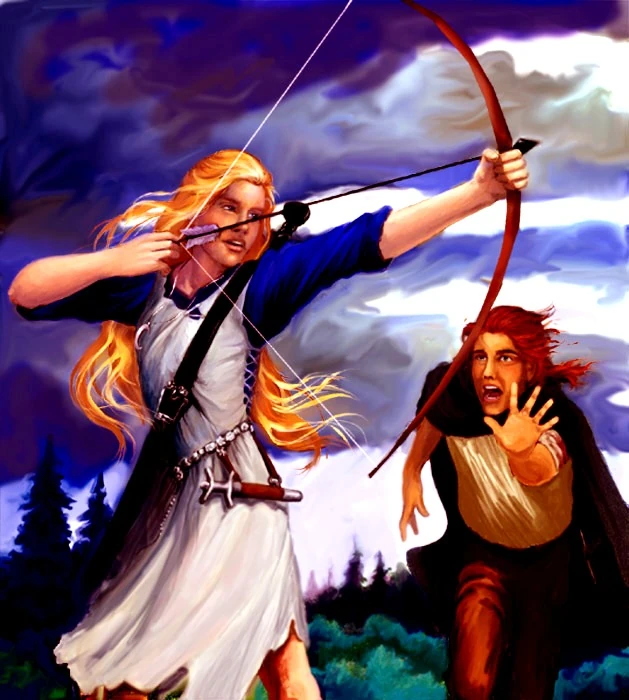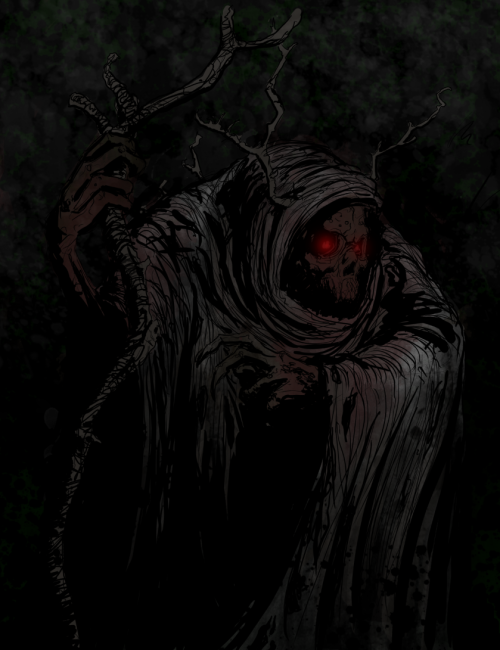 |
| The cover I got from the Long Lots Book Fair |
Character: though a plot driven story, Alexander's characters are eloquently and completely drawn. The text is sparse, the sentences refreshingly simple. Not uncomplicated, just short and sweet. So character descriptions are to the point, yet cast a long shadow. Our main character is Taran the Assistant Pig-Keeper. This title is cute, amusing and novel, however hidden in that gem is one of Fantasy's oldest cliches, the Diamond in the Rough cliche: namely the hero is a boy of dubious means and no prospects. Now the pig he keeps is an oracular pig named Hen Wen, and he lives in a village with an old wizard, and he's an orphan--all things which point to a less than ordinary heritage. That said he does at some point in the story, unsheathe a sword meant for kings and the blade's curse backfires on him. So there is some proof that he is not a Benighted Prince. Taran is stubborn and pig headed, however he does admit when he's wrong, and the boy does know how to apologize.
 |
| Dalben and Taran, beautiful illustration by Tim Probert |
And who can forget Ffewdur the Flamm, a fulfillment of the Bard cliche, though of an unusual variety. Ffew has a magic harp that pops a string whenever Ffewddur lies, and strains the boundaries of credulity. Why is a twenty something former King, yes he gave up his kingdom to travel and live as an itinerant musician, ceding authority to Taran, a fourteen year old boy? He gives a reason, several times, but it still seems unlikely. Regardless, he is a fun, stalwart addition to the team.
 |
| Eilonwy and Taran, no credit |
Eilowny is a good example of the Quirky Girl cliche, and is probably a precursor for some of J.k. Rowling's characters. A quirky girl is slightly odd, she may be pretty but her youth obscures that fact. Usually quite clever and witty, quirky girls are good foils for over serious young men. Eilowny's aunt fulfills another stereotype, that of the Ice Queen. An ice queen, harkening to one of Tolkien and C.S. Lewis originals, is a female magic user. Though there is no ice magic necessary to this stereotype, the coldness of the evil that animates their actions is palpable. It's interesting to note that evil male magic users like Sauron, are more often represented by fire. The ice queen breaks, or has a breaking point where her reserve flies into apoplectic rage. This is a common female stereotype.
Fflewddur represents the Bard cliche, though he is not your typical sort of bard, shrouded in mystery and a born lady-killer. He is part of the story's comic relief and he fills another cliche in Humorous Sidekick.
The Big Bad, or Evil King cliche is also heavily prevalent. Alexander admits from the first that he has borrowed heavily from Welsh cliche, but he doesn't really get specific. Arawn and the evil realm of Annuvin seem direct analogs to Sauron and Mordor, but perhaps these cliches themselves were borrowed from an earlier mythology (I thought that Tolkien had adapted his Christian mythos--Fallen Angel, etc.) We don't see Arawn in this book, he is merely indicated. Alexander had intended to write a trilogy, so there is time to develop this plot. However the story has a more local Big Bad, The Horned King. Unfortunately there is very little character development for this enemy.
Another cliche would be the Animal Sidekick. Disney took full advantage of this when they adapted the second in the series, The Black Cauldron. Gurgi is a vaguely ape like creature loveable and hairy. He has hands and feet and can walk and ride. For example, in later books he even wields a sword. So a bit unusual for this cliche in that Gurgi is almost human. Alexander himself described Gurgi as on the awkward cusp between human and animal.
The Welsh cliche, King Arthur was a Welsh legend, and it's from him that we have the High King cliche. I spent an afternoon in Cardiff when I was a young man, and though in some respects it was a disappointment, owing to the fact that the castle is in a relatively modern town, but it did remind me of all those tales of King Arthur and King Math. The Welsh cliche, like the Irish cliche takes on a variety of naming standards like Gywdion, and Fflewddur, etc. Thirty years later these cliches were used by ElIzabeth Haydon in her Rhapsody quintet: lots of unnecessary ys ls and cs. There is also, rather than the more modern divisions between elves and dwarves, simply a fair folk that encompasses all the strange and wonderful creatures of the natural world: including something of a Mother Nature cliche.
There is a powerful Druid-like humanoid who heals and protects the creatures of the forest. While he doesn't sprout leaves out of his ass or look like a giant tree, he serves as a popular fantasy link to a cult of nature worship present in most fantasy.
One interesting note: while there are no elves, per se, there is most definitely (spoiler alert) a link between the high King and his get, The Sons of Don and the Elvish summer kingdom, that is the concept, of a higher race of man, leaving the realms of earth for more commonplace men like Taran. This is evident by the end of the Chronicles, in The High King. There are many more cliches in the Chronicles, but I should probably save more of this material for the next book!
Completeness: this book represents an earlier era of fantasy. As such it's completeness factor stems more from good writing then from good world building. Alexander manages to pen, in very few words a world both convincing and complex. However, in retrospect it doesn't feel as deep as we've come to expect from even teen lit. There is no world map, nations are mentioned but not given a history. We know that the world of Prydain has many wondrous things: magical swords, baubles, old sages, fair folk (who appear to be dwarves) and an ancient evil, but in this first installment very little depth is given. Modern fantasy is very different. Now, I know that there are four other novels in this series, and that the world will grow with every installment, but this novel could really use an additional 150 pages; and if it had been written now, and not in the sixties, I am sure Alexander would have provided it.
For now, enjoy and treasure this piece of traditional and historical fantasy lit. Remember that so much of what we read today has Taran, Gwydion, Eilowny and Arawn at its great, warm, heart.



Are these cliches, or archetypes? These seem like character types that pervade literature, across genres. They have appeal to us as humans, and so authors use them (and reuse them, and reuse them) - when it works, it works well, when it doesn't, it feels trite. But find me a great novel of any kind that doesn't use at least some of these character types.
ReplyDeleteI tried to post this reply already.
ReplyDeleteI totally agree, re cliches. I use the term to combat some of the internet snark I've seen about fantasy, and cliches. There are better words, like tropes, for example.
But you can see my list of Cliches here:
http://darkgodslight.blogspot.com/2016/03/the-godsols-list-of-fantasy-cliches-and.html
The picture of Eilonwy and Taran is by Dawn Davidson (Saeriellyn)
ReplyDelete